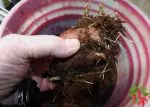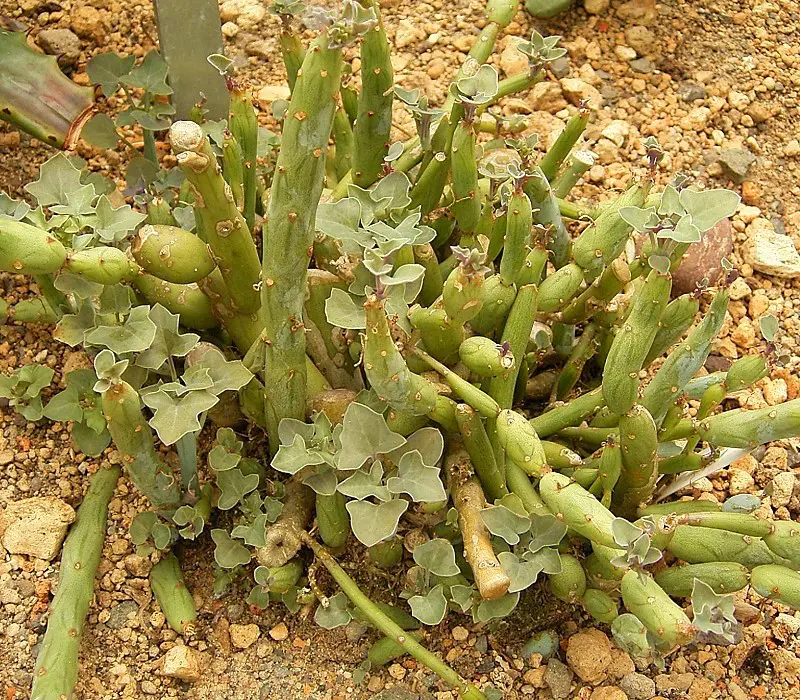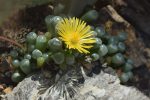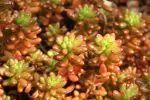This post contains affiliate links. If you buy something from one of our links we may earn a commission. Thanks
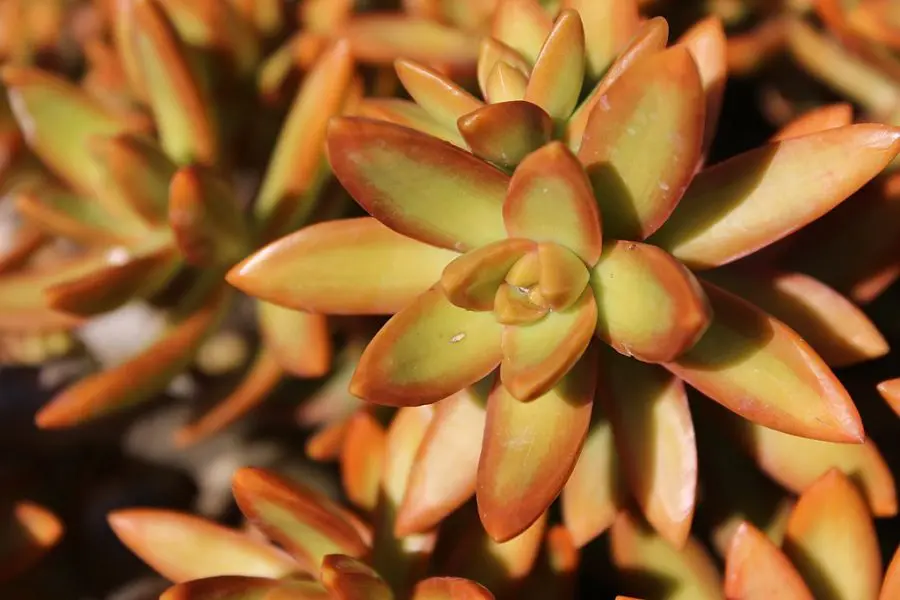
Discover the joys of Sedum adolphii care in our easy-to-follow guide, covering all you need to know for a thriving, vibrant Golden Sedum succulent in your home.
Sedum Adolphii or Golden Sedum growth tips are quite straightforward. This succulent thrives in well-draining soil and requires full to partial sun exposure for vibrant leaf color. Water sparingly and only when the soil is dry to touch. It’s highly adaptable and great for beginners.
Are you ready to dive into the world of Sedum adolphii care? You’ve come to the right place!
This stunning succulent, also known as the Coppertone Stonecrop or Golden Sedum, is a true gem for both beginners and seasoned gardeners.
With its eye-catching orange-copper leaves and charming white flowers, Sedum adolphii adds a touch of beauty to any space.
Let’s explore how to keep this lovely plant happy and healthy, so it can grace your home or garden with its vibrant presence.
What is Sedum adolphii?
Welcome to the fascinating world of Sedum adolphii!
In this blog post, we’ll be taking a closer look at this gorgeous succulent, exploring its origins, and learning more about what makes it such a popular choice among plant enthusiasts.
Hailing from Mexico’s rocky terrain and cliff faces, Sedum adolphii (also known as the Coppertone Stonecrop or Golden Sedum) boasts bright orange-copper leaves and delicate white flowers.
But that’s just the beginning! We’ll also dive into how to care for and propagate this captivating plant, ensuring it thrives in your home or garden.
So, let’s get started and uncover the secrets of Sedum adolphii together.
Common Names:
Sedum adolphii, affectionately known as the Coppertone Stonecrop or Golden Sedum, is a versatile and eye-catching succulent that brings life to any space.
With its brilliant foliage and easy-going nature, it’s no wonder this plant has captured the hearts of many!
Plant Description:
This remarkable plant can grow 7-8 inches tall and features small, star-shaped white flowers that bloom in the spring.
The evergreen leaves are truly the star of the show, developing red or orange edges when exposed to enough sunlight.
With its captivating colors and unique textures, Sedum adolphii is truly a standout in any succulent collection.
Origins and Natural Habitat:
Sedum adolphii is native to Mexico, where it thrives in rocky terrain and on cliff faces.
Over time, it has also become naturalized in places like Sicily and the Canary Islands.
Hardy in USDA zones 9 and southward, this resilient plant is well-adapted to its rugged natural environment, making it a fantastic choice for those looking to add a touch of hardiness and beauty to their own gardens.
Exploring Sedum adolphii Varieties
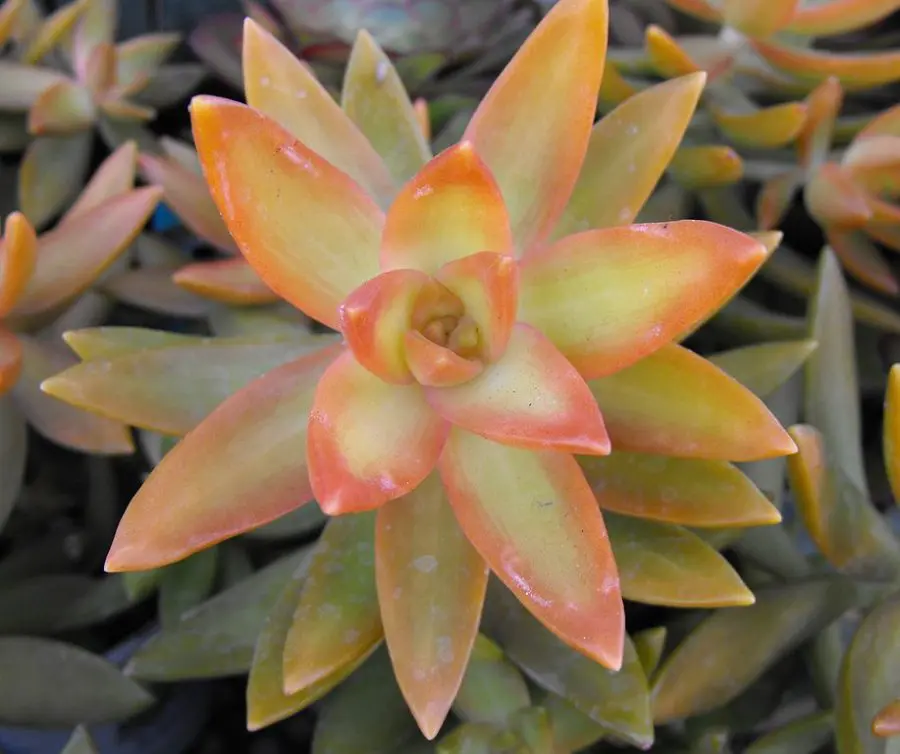
Sedum adolphii, while beautiful in its original form, also boasts a few interesting varieties that offer subtle differences in appearance and coloration.
Each one brings its own unique charm to the table, providing an exciting opportunity to diversify your succulent collection:
Sedum adolphii ‘Firestorm’:
This striking variety features vibrant red-orange leaf margins that stand out against the yellow-green central leaf color.
The intense colors give ‘Firestorm’ its name, creating the impression of a blaze within your garden or home.
Sedum adolphii ‘Golden Glow’:
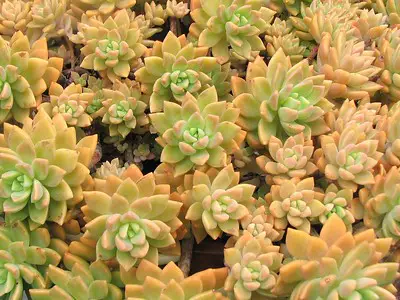
With its luminous golden-yellow leaves, the ‘Golden Glow’ variety certainly lives up to its name.
The leaf edges take on a warm, reddish-orange hue when exposed to ample sunlight, adding a beautiful contrast to the bright foliage.
Sedum adolphii ‘Lime Gold’:
This variety is known for its lighter, lime-green leaves with a hint of yellow.
The foliage has a subtle golden shimmer that adds a touch of elegance and brightness to any space.
Sedum adolphii ‘Shooting Stars’
Sedum adolphii ‘Shooting Stars’ is a captivating succulent known for its striking appearance and ease of care.
This charming variety of golden sedum features clusters of rosettes with glossy, green leaves that display a gradient of warm, golden-yellow hues.
The leaf tips are adorned with a vivid red-orange, creating a stunning contrast that resembles the bright colors of a shooting star.
Each of these Sedum adolphii varieties offers a slightly different visual experience while still retaining the low-maintenance and resilient qualities that make this succulent so popular.
Whether you choose one variety or decide to collect them all, these captivating plants are sure to make a stunning addition to your indoor or outdoor garden.
Sedum adolphii indoor benefits
Growing Sedum adolphii indoors comes with a range of benefits that make it a valuable addition to your indoor plant collection.
Its aesthetic appeal, adaptability, and low-maintenance nature make it an ideal choice for any plant lover:
• Aesthetic Appeal: With its vibrant orange-copper leaves and delicate white flowers, Sedum adolphii adds a touch of natural beauty to any indoor space.
• The striking coloration of the leaves creates an interesting focal point, while the small, star-shaped flowers bring a subtle charm to your home.
• Air Purification: Like many indoor plants, Sedum adolphii helps to improve air quality by absorbing pollutants and releasing oxygen.
This natural air purification process contributes to a healthier and fresher living environment.
• Stress Reduction: Studies have shown that indoor plants can have a positive effect on mental well-being.
The presence of Sedum adolphii, with its soothing colors and interesting textures, can help reduce stress and create a calming atmosphere in your home.
• Easy Care: Sedum adolphii’s low-maintenance nature makes it a perfect choice for those who may not have a green thumb or are just starting their plant journey.
Its adaptability to various light conditions and minimal watering requirements make it an ideal indoor plant for busy lifestyles.
• Versatility: Sedum adolphii can be grown in a variety of containers, including hanging baskets and decorative pots, allowing you to showcase your plant in different ways that suit your personal style and home décor.
By bringing Sedum adolphii into your home, you’ll not only enhance your living space’s aesthetic appeal but also enjoy the various physical and emotional benefits that come with caring for this stunning succulent.
Sedum adolphii care
Ready to embark on your Sedum adolphii care journey?
This low-maintenance succulent is a dream come true for both new and experienced plant enthusiasts.
In this section, we’ll cover all the essential aspects of caring for your Sedum adolphii, from light requirements and watering to soil preferences and temperature.
Whether you’re growing your plant indoors or outdoors, our comprehensive guide will ensure your Golden Sedum stays happy, healthy, and thriving.
Let’s dive in and unlock the secrets to successful Sedum adolphii care together!
Light Requirements
Ideal Sunlight Exposure: Sedum adolphii thrives in bright light, so it’s essential to provide it with plenty of sunlight for optimal growth.
Placing your plant near a sunny window or in a spot that receives at least 6 hours of sunlight per day will keep it happy and healthy.
Sun Stress and Color Changes: Interestingly, Sedum adolphii’s leaf color can change based on sunlight exposure.
When the plant receives ample sunlight, the leaf edges take on a vibrant red or orange hue, enhancing its overall beauty.
However, be mindful of extreme sun exposure, as it can lead to sunburn on the leaves.
Watering
Frequency and Amount: Sedum adolphii, like most succulents, prefers a less-is-more approach when it comes to watering.
Allow the soil to dry out completely between waterings, and then water thoroughly, ensuring that excess water drains away.
Overwatering can lead to root rot, so it’s essential to find the right balance for your plant.
Winter Rest Period Considerations: During the cooler months, Sedum adolphii enters a rest period and requires even less water.
Reduce your watering frequency during this time, taking care to avoid overwatering and potential damage to the plant.
Soil and Pots
Well-Draining Soil Mix: A well-draining soil mix is crucial for Sedum adolphii’s health.
You can use a mixture of potting soil, perlite, or pumice to provide a balance of moisture retention and drainage, ensuring that your plant’s roots stay healthy and strong.
However, we feel a mix of coco coir and perlite is a better option and it is more environmentally friendly than peat-based soil mixes.
Coco Coir and Perlite as a Grow Medium for Golden Sedum
Coco coir and perlite make an excellent growing medium for Golden Sedum, as they provide the right balance of moisture retention and drainage that this succulent needs.
Let’s explore the benefits of using this combination and how to create the ideal mixture for your Sedum adolphii:
Benefits of Coco Coir:
Coco coir, a natural byproduct of coconut husks, is an eco-friendly and sustainable option for a growing medium.
It retains moisture well, ensuring your Golden Sedum stays hydrated without becoming waterlogged.
Additionally, coco coir is resistant to fungal growth and provides good aeration for the roots.
Benefits of Perlite:
Perlite, a volcanic rock that has been heated to expand into a lightweight, porous material, is an excellent addition to your Golden Sedum’s growing medium.
It helps improve drainage and aeration, preventing root rot and encouraging healthy root development.
Creating the Ideal Mixture:
To create the perfect growing medium for your Sedum adolphii, combine equal parts of coco coir and perlite.
This 1:1 ratio will provide an optimal balance of water retention and drainage for your plant.
You can also add a small amount of worm castings or well-composted organic matter to the mix to provide additional nutrients and promote healthy growth.
By using a coco coir and perlite mixture as a grow medium for your Golden Sedum, you’ll be setting your plant up for success, ensuring it receives the proper balance of moisture and aeration for healthy, vibrant growth.
Container Options: When choosing a container for your Sedum adolphii, opt for one with drainage holes to prevent water from accumulating at the bottom.
Terra-cotta pots are an excellent choice, as they allow for good airflow and help wick away excess moisture.
Plastic pots are an inexpensive option and work well but you need to be more careful with watering.
Fertilizing Sedum adolphii
Frequency: Sedum adolphii benefits from occasional fertilization during the active growing season.
Fertilize your plant every 4-6 weeks from spring to early fall using a balanced, water-soluble fertilizer.
Type of Fertilizer: A diluted liquid fertilizer, specifically designed for succulents and cacti, is an excellent option for Sedum adolphii.
Be sure to follow the instructions on the label to avoid over-fertilizing and damaging your plant.
Temperature and Humidity
Ideal Temperature Range: Sedum adolphii prefers temperatures between 20-25°C (68-77°F) but can tolerate a wider range as long as it’s not exposed to prolonged freezing conditions.
Keep your plant away from drafty windows or air vents to avoid sudden temperature fluctuations.
Tolerance to Temperature Fluctuations: While Sedum adolphii is somewhat tolerant of temperature changes, it’s crucial to avoid exposing it to extreme cold or heat for extended periods, as this can cause stress and damage to the plant.
Humidity Preferences: Sedum adolphii is relatively adaptable when it comes to humidity levels.
However, it does best in moderate to low humidity environments, as high humidity can lead to issues like rot or fungal growth.
Ensure proper air circulation around your plant to help maintain a healthy humidity level.
Sedum adolphii propagation
Ready to share the beauty of your Sedum adolphii with friends, family, or simply expand your own collection?
Propagation is a fun and rewarding way to create new plants from your Golden Sedum.
In this section, we’ll walk you through the different methods of propagation, including leaf and stem cuttings, as well as growing from seeds.
With our guidance, you’ll be well on your way to creating new, thriving Sedum adolphii plants in no time.
So, let’s dive into the world of propagation and spread the joy of Golden Sedum together!
Leaf Propagation
Gently Detach a Leaf: Carefully remove a healthy, mature leaf from your Sedum adolphii by gently twisting it away from the stem. Ensure that the leaf detaches completely, without leaving any part behind on the stem.
Let the Leaf Dry: Place the detached leaf in a dry, well-ventilated area, and allow it to form a callus at the cut end. This process usually takes about 1-3 days.
Place on Soil: Once the leaf has callused, place it on top of a well-draining soil mix, ensuring the callused end does not touch the soil. Position the leaf in a spot with bright, indirect light.
Water and Wait: Mist the soil around the leaf every few days, keeping the soil slightly moist. Over the next few weeks, new roots and tiny leaves will start to emerge from the callused end.
Stem Cuttings
Take a Stem Cutting: Using a clean, sharp pair of scissors or a knife, cut a healthy stem from your Sedum adolphii, ideally with at least 3-4 leaves.
Allow the Cutting to Dry: Let the stem cutting dry for a few days in a well-ventilated area, allowing the cut end to callus.
Plant the Cutting: Once the cut end has callused, plant the stem cutting in a well-draining soil mix, burying the callused end about an inch deep.
Water and Monitor: Water the soil around the cutting thoroughly, allowing it to dry out between waterings. Within a few weeks, the cutting should establish new roots and begin to grow.
Propagating By Division
Propagating Sedum adolphii by division is another simple method that can yield great results, especially for larger, more established plants.
Here’s a step-by-step guide to help you propagate your golden sedum using this technique:
Choose the Right Time: The best time to propagate your Sedum adolphii by division is during the active growing season, typically in spring or early summer, when the plant is more likely to recover quickly.
Remove the Plant from its Container: Gently remove your golden sedum from its current pot, taking care not to damage the roots.
Inspect the Plant: Examine the root system and identify natural divisions, or clusters of stems and roots that can be separated from the main plant.
Separate the Divisions: Using your hands or a clean, sharp pair of scissors or a knife, gently separate the divisions, ensuring that each new plant has a healthy root system and at least a few leaves.
Allow the Divisions to Rest: Set the divisions aside for a few hours or overnight to allow any cut or damaged roots to dry and form a callus.
Plant the Divisions: Plant each division in its own container filled with a well-draining soil mix, such as a blend of potting soil, coco coir, and perlite.
Make sure the container has drainage holes.
Water and Care: Water the newly planted divisions thoroughly, then provide the same care as you would for a mature Sedum adolphii.
This includes ensuring proper light, watering, and temperature conditions for optimal growth.
By following these steps, you’ll soon have new Sedum adolphii plants thriving in their new homes.
Remember to be patient, as it may take some time for the divisions to establish themselves and begin to grow vigorously.
Seed Propagation
Obtain Seeds: Purchase Sedum adolphii seeds from a reputable source or collect them from an existing plant.
Prepare the Soil: Fill a shallow container with a well-draining soil mix, preferably a combination of potting soil and perlite or pumice.
Sow the Seeds: Lightly scatter the seeds on top of the soil, gently pressing them in without covering them completely.
Maintain Moisture: Mist the soil regularly to keep it consistently moist but not soggy. Place the container in a bright, warm location with indirect light.
Monitor Growth: Seedlings should begin to emerge within a few weeks. Once they have grown a few sets of leaves, you can transplant them into individual pots.
Tips for Successful Propagation
Patience: Propagation can take time, so be patient and give your new plants the care they need to grow and thrive.
Optimal Conditions: Ensure you provide the appropriate light, temperature, and humidity levels to encourage healthy root and leaf development.
Sterile Tools: Always use clean, sterilized tools when taking cuttings to minimize the risk of infections or diseases.
Monitor Progress: Keep an eye on your propagation, adjusting care as needed to promote healthy growth and development.
Maintenance and pruning
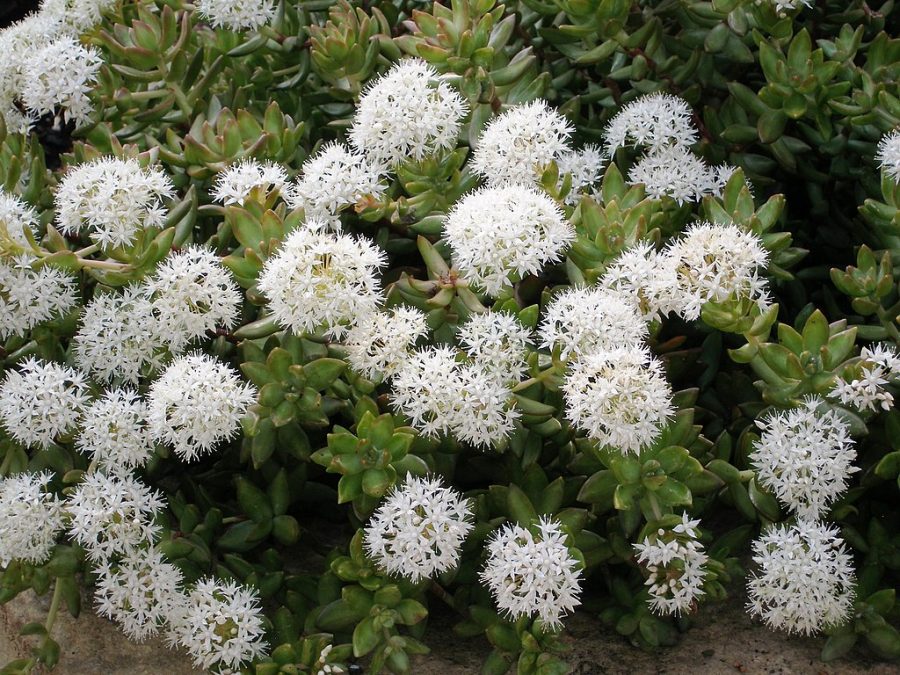
Want to keep your Sedum adolphii looking its best?
Maintenance and pruning are key to ensuring your Golden Sedum stays healthy and attractive.
In this section, we’ll guide you through the process of caring for your plant, including when and how to repot, as well as dealing with common pests and diseases.
With our expert advice, you’ll become a master at maintaining your Sedum adolphii in no time.
So, let’s get started and make sure your Golden Sedum continues to be a shining star in your plant collection!
Repotting Sedum adolphii
When to Repot: Ideally, you should repot your Golden Sedum every 2-3 years, or when it outgrows its current container.
Signs that your plant may need repotting include roots growing out of the drainage holes or a crowded, overgrown appearance.
How to Repot: Gently remove your Sedum adolphii from its current pot, taking care not to damage the roots.
• Choose a new container that is slightly larger than the old one and has drainage holes.
• Fill the bottom of the new pot with a well-draining soil mix, place the plant in the container, and fill in the remaining space with soil.
• Make sure to plant the crown at the same depth it was growing before.
• Water the plant thoroughly to help it settle into its new home.
Pruning
Encouraging Bushier Growth: To promote a bushier, more compact appearance in your Golden Sedum, trim back leggy or overgrown stems.
This will encourage new growth to develop at the cut points, leading to a denser, more attractive plant.
Removing Dead or Damaged Foliage: Periodically inspect your Sedum adolphii for dead or damaged leaves, and remove them by gently pinching or trimming them off.
This will help maintain the plant’s overall health and appearance.
Pests and Diseases
Common Pests: Sedum adolphii can occasionally fall victim to common pests such as mealybugs, aphids, and spider mites.
Keep an eye out for any signs of infestation, and treat promptly using non-toxic methods such as insecticidal soap or neem oil.
Disease Prevention and Treatment: Overwatering and poor drainage can lead to root rot and fungal diseases.
Ensure your plant has well-draining soil and a proper watering schedule to prevent these issues.
If you notice any signs of disease, remove affected parts of the plant and treat it with an appropriate fungicide, if necessary.
Non-toxicity of Sedum adolphii: Unlike some other Sedum varieties, Sedum adolphii is not listed as toxic to humans or animals.
However, it’s always a good idea to keep your plants out of reach of pets and children to prevent accidental ingestion or damage to the plant.
Sedum adolphii FAQs
If you’ve just brought home a Sedum Adolphii, commonly known as Golden Sedum, you might have a few questions about how to properly care for this striking succulent.
Golden Sedum is a popular choice among succulent enthusiasts because of its golden-yellow leaves and ease of care.
However, there are certain factors you need to consider to keep your plant healthy.
Below are answers to some frequently asked questions that can help you make the most out of your Golden Sedum experience.
Q: How often should I water my Golden Sedum?
A: Water your Golden Sedum only when the soil is dry to the touch. Overwatering can lead to root rot.
Q: Does Golden Sedum need a lot of sunlight?
A: Golden Sedum prefers full to partial sun. Make sure it receives at least 6 hours of sunlight per day for vibrant leaf color.
Q: Can I propagate Golden Sedum?
A: Yes, Golden Sedum is easy to propagate. You can simply cut a stem or take a leaf cutting and let it callous before planting it in well-draining soil.
Q: Is Golden Sedum pet-friendly?
A: No, Golden Sedum is not safe for pets and can be toxic if ingested. Keep it out of reach from dogs and cats.
Sedum adolphii Care Final Thoughts
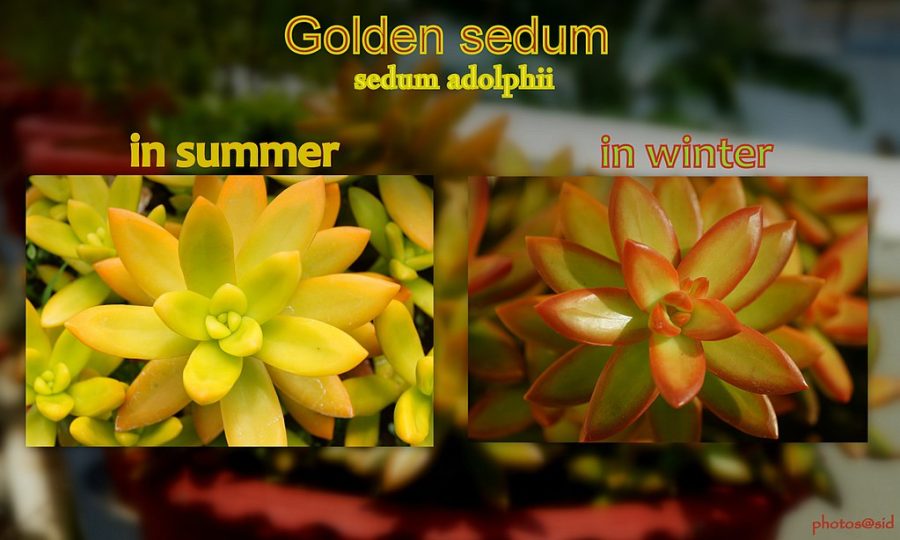
As we wrap up our journey into the world of Sedum adolphii care, we hope you feel confident and inspired to grow and maintain this beautiful succulent.
With its vibrant foliage and easy-going nature, the Golden Sedum is a fantastic addition to any plant collection.
By following the tips and advice we’ve shared throughout this guide, you’ll be well-equipped to provide the best care for your Sedum adolphii, ensuring it thrives for years to come.
So, go forth and enjoy the rewarding experience of nurturing this lovely plant, and don’t forget to share your success with fellow plant enthusiasts!
Recap of Sedum adolphii Care Tips In A Nutshell
• Light Requirements: Ensure your Golden Sedum receives plenty of bright sunlight, ideally 6-8 hours of direct sun per day.
• Watering: Water your Sedum adolphii thoroughly, allowing the soil to dry out between waterings.
• Soil and Pot: Use a well-draining soil mix, such as a combination of potting soil, coco coir, and perlite, in a container with drainage holes.
• Fertilizing: Apply a balanced, diluted liquid fertilizer every 4-6 weeks during the growing season.
• Temperature and Humidity: Maintain a temperature range of 65-75°F (18-24°C) and moderate humidity levels for optimal growth.
• Propagation: Propagate your Golden Sedum using leaf or stem cuttings, division, or by sowing seeds.
• Maintenance and Pruning: Repot your plant when needed, prune for bushier growth, and monitor for pests and diseases.
Growing Sedum adolphii An Easy-to-Care-for Succulent
Embrace the joy of growing Sedum adolphii, knowing that it’s a resilient and low-maintenance succulent perfect for beginners and experienced plant lovers alike.
Its striking appearance, coupled with its adaptability and minimal care requirements, makes the Golden Sedum a delightful addition to any indoor or outdoor garden.
By following the care tips we’ve provided, you’ll be well on your way to nurturing a thriving and beautiful Sedum adolphii. Happy planting!
Read more: 10 Benefits Of Succulent Plants Indoors Plus They’re Easy To Grow









